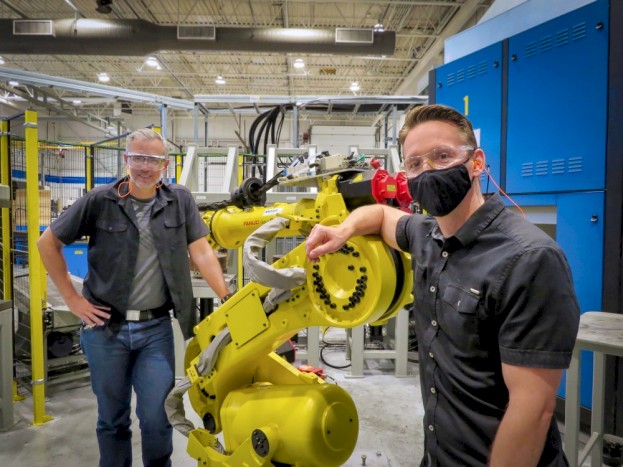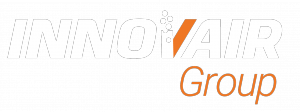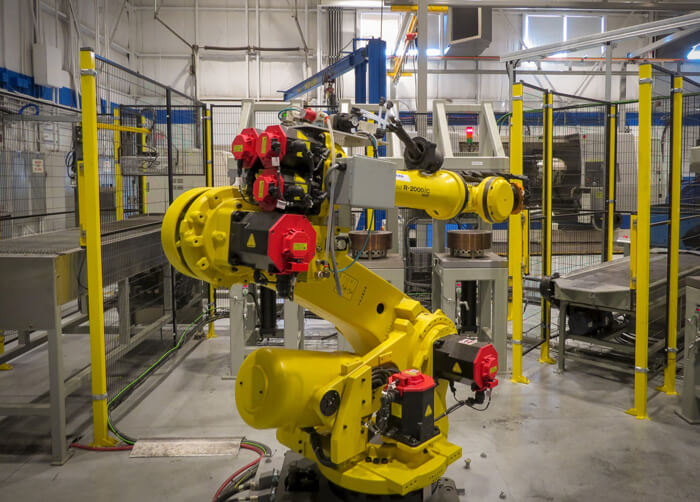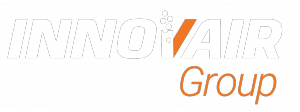Automation is the future of production and manufacturing due to its ability to increase productivity, performance, and worker safety. It also reduces operating costs and yields a good Return on Investment (ROI). Consequently, automation is becoming an integral part of many businesses.
We spoke with Daryl Perry, President and CEO of Dimatec Inc., to learn more about what automation means to their company and how Innovair Automation has helped in their journey. Dimatec Inc. is a Canadian manufacturer of high-quality metal-bond diamond tools and related drilling equipment. Dimatec is a leader in the drilling industry and has successfully integrated robotics into their production since investing in their first robot 10 years ago. Today, Dimatec has 7 robotic cells that all work to produce their innovative drilling equipment. They have experienced tremendous increases in efficiency and productivity since their first installation.

Perry shared that Dimatec’s biggest concern was safety when they first invested in automation.
“Safety is a huge challenge for us. When our furnaces are up at 2000 degrees Fahrenheit, they are dangerous to be near. Safety is improved by having a robotic arm loading and unloading the furnaces… that is why our first furnacing cell was installed, for our team members' safety.”
Although the benefits of automation are well known, there are still common questions that businesses may consider when deciding to invest in automation. In this article, we will be addressing these concerns.
Starting your robotics journey
Some common questions that businesses have when first deciding whether or not to integrate robotics are:
- Is the investment worth it?
- How do I get the robot working?
- Will my production output decrease during installation?
These are all valid and important questions to ask as a business operator. We spoke with Dimatec about how each of these questions impacted their decision to invest in automation.
Is the investment worth it?
There are many factors that make an investment in automation ‘worth it.’ As Perry mentioned, enhanced safety was the primary motivation for Dimatec's first installation, as is for many robotic installations. Robots are good substitutes in situations where there is a high risk of injury, whether it be a sudden injury or long-term repetitive motion injuries. The intangible costs associated with potential injuries can play a significant factor in the ROI calculation.
Automation also directly reduces bottlenecks and improves throughputs; these reductions in waste will create efficiencies and improve ROI. Perry shares his thoughts on how automation has created efficiencies in Dimatec's production.
“Of course, efficiencies are created with robotic loading and unloading. The computers and furnaces are integrated so that when a cycle is done, it's unloaded immediately and not waiting for a human to walk by and notice it is ready. Timing is a huge element. Although you can’t speed up the process of introducing heat and melting metals, you can still create efficiencies around loading and unloading times, reducing the time wasted.”
Freeing up the operator’s time for other value-added tasks increases your capacity. This increased capacity can lead to increased sales, which means a better ROI. Not sure where to start? Innovair Automation can help businesses decide if automation is a good investment, through our introductory robot feasibility and cost-benefit studies we can help you determine which project has the best ROI potential.
How do I get the robot working?
Another common issue that businesses face when first implementing robotics into their production is the design and programming of the robot. Off-the-shelf robot arms are not ready to complete the tasks most companies need; therefore, experienced robotic engineers are needed to ensure each robot is utilized to its full potential.

Perry states that Innovair Automation is an important part of their setup because they provide the expertise that is required to program their robotic cells.
“The challenge was, we could put all the pieces together, we could buy a furnace and robotic arm, add pressing mechanisms, and put caging around everything, but getting the whole system working together is the true challenge of an integration... The integration of these systems is not an in-house capability that most companies have. You truly have to go to experts like Innovair Automation to get everything working together seamlessly.”
Working with an integrator from the start can help to ensure the robot cell communicates effectively with existing production systems and adheres to all relevant safety standards.
Will production output decrease during installation?
The commissioning of a robot can take time, especially when multiple suppliers are working together to create a fully customized cell. Planning for a decrease in output during this time is often an important consideration.
Innovair Automation has a sizable workspace (soon to be bigger!) within which to build and test the robot cell prior to installation at the customer’s site. This means less development time on site, tying up your resources. Innovair Automation has also started shipping all cells on their Robot Cell Platform – a structure that minimizes set-up time on-site, so you can start producing parts even sooner.
In addition, although the output may decrease temporarily, the lost production is often quickly made up for by the robots' increased rate of production.
Deciding to go with automation
Answering the above questions is a good first step to deciding whether automation is right for your business. Deciding to implement automation is a big decision. That is why it is helpful to work with the experts to determine the best course of action. The best way to plan for this type of project is to complete a consultation with Innovair Automation. These consultations include reach analysis, cycle times, process planning, fixture design, and any other application-specific considerations.
Perry shares that “When you are partnering with the expert integrators, automators, and engineers who understand the integration of robots like the Innovair Team, it’s a long-term relationship that needs trust. We definitely want to work with Innovair Automation again.”
Leaders in manufacturing like Dimatec Inc. are constantly looking towards the future. Perry believes the future is with Industry 4.0.
“Industry 4.0 will be a part of our future; automation is something that we need to be competitive globally. Partnering with experts such as Innovair Automation is how you do that. You have to work with other companies to be competitive. We have to be stronger, faster, and more determined to win the race and keep manufacturing in Central Canada.”


